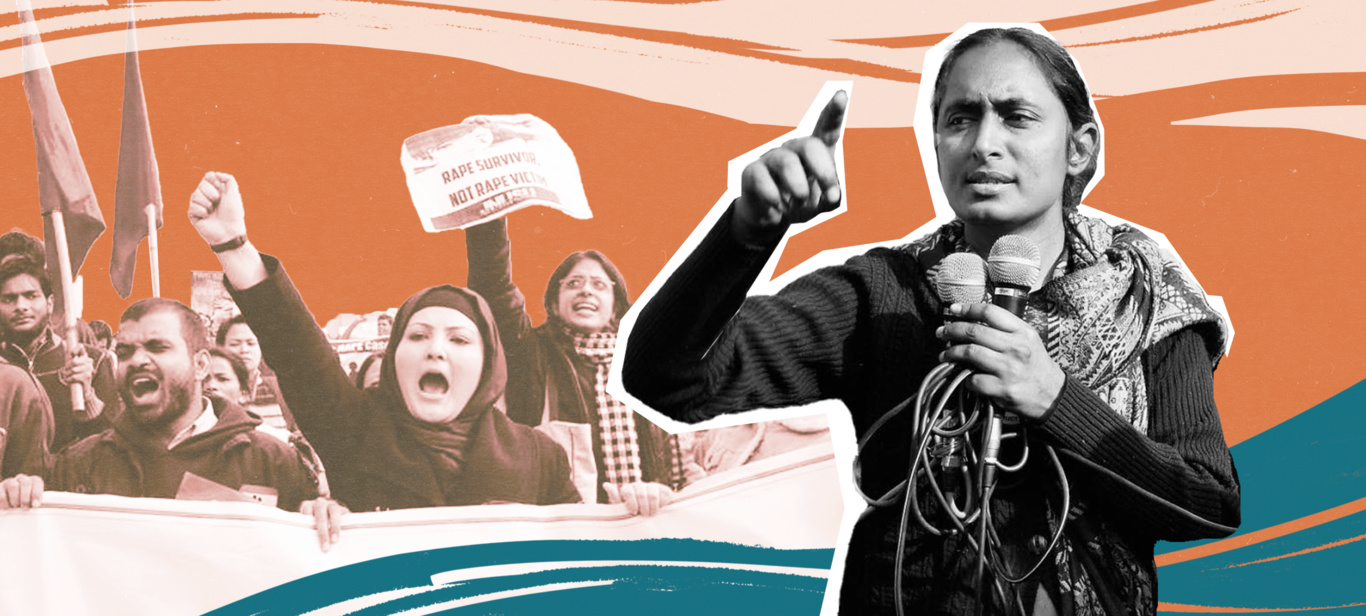Kavita Krishnan is one of the prominent figures in India's left and women's movements today. She has long been fighting for the rights of women, workers, and discriminated communities, playing a crucial role in large-scale campaigns to stop violence against women. In her texts, she analyzes the problems of Indian society and experiences of struggle from the Marxist feminist perspective.
In response to the full-scale invasion of Ukraine, Kavita Krishnan managed to push the Communist Party of India (Marxist-Leninist) Liberation to condemn Russian aggression more unambiguously than other Indian political organizations, and to organize street protests against it. However, the CPI (ML) failed to show effective solidarity with the Ukrainian people, causing Kavita to leave the party leadership and its women's organization, of which she had been a member for over two decades.
Today, Kavita Krishnan's voice in support of Ukraine is one of the loudest among intellectuals in the Global South. In her numerous speeches and articles, she exposes the Putinist slogan of a "multipolar world" and the reactionary internationalism of the Kremlin, which unites authoritarian regimes and far-right forces worldwide. She calls for solidarity among liberation movements that resist anti-democratic tendencies in India itself and elsewhere.
In the upcoming second part of the interview with Kavita Krishnan, read about the impact of the Russian-Ukrainian war on the positions of the Indian left and Indian society in general.
Tell our readers about yourself and how you got involved in political activism. What does it mean to be a leftist, a Marxist, a feminist in today’s India? Is this stance conditioned by caste, class, region, religion?
I do not come from a political background. There are states in India where left politics is very visible and it is natural for young people to gravitate there such as West Bengal and Kerala. I was not from either of those states. I was brought up in a steel plant township (Bhilai) that was set up with Soviet collaboration. My father had been sent among a lot of engineers to Kyiv for training. And this background makes me now acutely aware of how Indians perceived the Soviet Union, because we would talk about the Soviet Union as Soviet Russia (?????? ???). These were the same words in Hindi. There was a colony in Bhilai where the Soviet expatriates lived, the ones who were involved in the steel plant. And that colony was called the Russian colony.
Although my parents were offered evening classes of Russian, I remember they met a Ukrainian man who spoke beautiful Urdu — a widely spoken language in India. And I remember meeting him and his wife, and thinking that clearly there's a lot of diversity in the Soviet Union. But at the same time my parents had that instinctive sense about how repressive the Soviet Union was. There was one person they were very friendly with, but who could not come and meet my parents and just hang out.
This background helps me understand how the Indian public in general views Ukraine. They don't know what Ukraine is. What they know is Russia and their idea is of Russia as a benefactor or as a friend. The idea of Ukraine as a distinct nation of its own is not something widespread, but I forgive that when it comes to the ordinary Indian person. This can be corrected: they do not know, but there is no active prejudice to stop them from knowing that. The problem is with those on the left and liberal side in India who do know very well a lot of the history and yet they refuse to accept the reality.
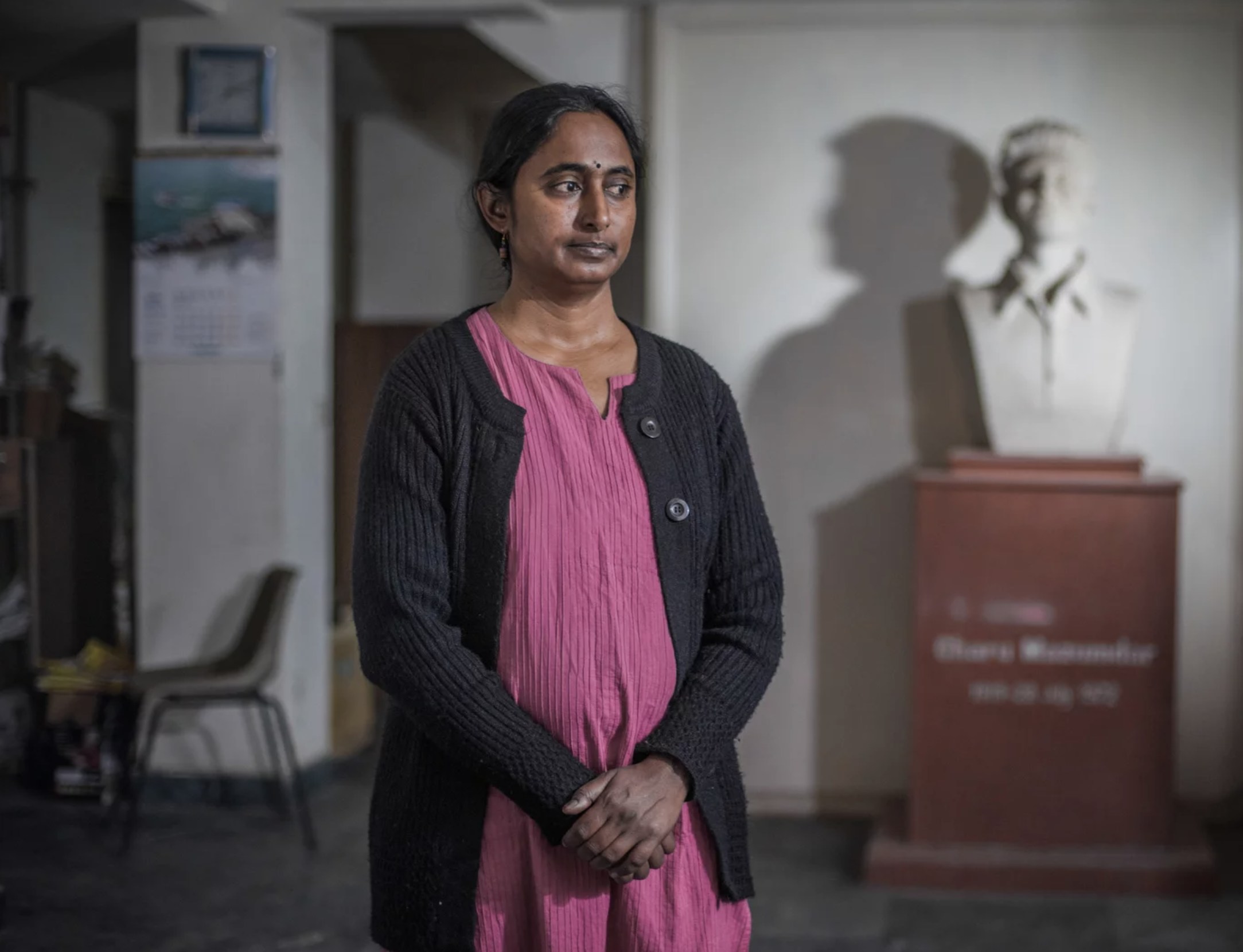
Kavita Krishnan at the office of the Communist Party of India. Photo: Poulomi Basu/VII Mentor for NPR
Getting back to myself. I was brought up in Bhilai, did all my schooling there. But I was not really exposed to left politics there at all. I studied in Bombay (Mumbai) for three years between 1990 and 1993. And the time of my graduation was the time when Hindu supremacist forces were on the ascendance in India. That was the first time that they were coming close to getting political power. Their rise was accompanied by a lot of violence against the Muslim minorities, but their whole ideological rhetoric was also very anti-feminist. For me as a young adult woman who was just managing to find some sense of freedom in the city, it was very scary to keep hearing this rhetoric about how that freedom was just a Western construct and that India needs to get rid of it.
I was not very politically active in Mumbai, but then I came to Delhi to study at the university. There I got involved in student politics, because I felt the need to be part of some action against the rise of the Hindu supremacist right, which was happening on Jawaharlal Nehru University (JNU) campus as well. Initially the motive to get involved came to me from a feminist perspective. I was very uneasy with the left organizations’ positions on feminism and LGBTQ rights, because those concerns were quite central to my sense in politics. But eventually, I was reassured that I could make a change in how that organization perceived these issues. And I changed somewhat myself, because I also began to read things which I had only read criticisms of before, namely Marx. So I could come to a fresh real appreciation of what Marx was saying to someone like me in the 1990s in India. And that was very interesting and insightful.
People like me are not drawn to the left movement because of Marx, Lenin, Engels or because of the Soviet Union or China. We are drawn to it, because it is fighting certain very important mass struggles in India, which no one else does. For instance, the Communist Party of India (Marxist–Leninist) Liberation (CPIML), which I joined, was extremely courageous in organizing struggles of the most oppressed agricultural workers in India, especially in North India. No other left party had any success in doing that in North India, and CPIML had. They had suffered very badly for it. A very close friend of ours from university, who was the student union president when I was joint secretary there, went to become a CPIML activist in his hometown in Bihar. He was killed there within a couple of months. He was sincere and genuine. He was shot because he was seen as a potentially rising leader. The leftists for me were people like him. I felt that if I can really be of use in this party, then I should, because I'm alive and he’s not.

Kavita Krishnan at Jawaharlal Nehru University, New Delhi, March 1994. Photo: from open sources
I have seen that CPIML has a base in Bihar, where it has 12 seats in the assembly. But сould you tell our readers a little bit more about your party?
The Indian left movement goes back to the colonial time India. In the 1920s you started seeing in India a lot of left trade union activism. These were individuals or small revolutionary groups which were to a greater or lesser degree inspired by the Bolshevik revolution. In 1925, the undivided Communist Party (CPI) was formed. India became independent in 1947. The undivided Communist Party existed till 1964, and then there was a split and the Communist Party of India (Marxist) (CPIM) was formed. The issue on which the split occurred was how the left viewed the question of democracy and who do we think are the forces which could fight alongside us for democracy. It was about an assessment of the Indian state and especially the ruling Indian National Congress (INC) party. The undivided CPI had become quite beholden to the Congress, which had been in power. They imagined that the Congress was doing land reforms and so it is also democratic. But if you look at that time the Congress was home to a lot of groups, including the far right.
Of course, the government was not a farright government. It was nationalist in the sense that you, Ukrainians, may understand, but big Europe often doesn't because they think nationalism means fascism – hypernationalism. But for post-colonial countries like India nationalism is about asserting your national identity as a country that has had to fight colonialism to achieve that identity. I keep telling my friends in India that we ought to be understanding Ukraine, because that's also a Ukrainian story. Imagine, I tell them, if your colonizer lived next door to you.
Between 1964 and 1967, Charu Majumdar (Bengali: ???? ???????), one of the CPIM leaders in West Bengal, wrote the so-called Historic Eight Documents, which were inspired by the Chinese Revolution. He believed that China could give India a better understanding of the Indian Revolution because it involved peasants. At that time, India was primarily an agrarian country, and it still is. So, there is a lot of class struggle going on in Indian villages. In 1967, in the district where Charu Majumdar was the leader of CPIM, a big movement of very poor peasants started. They wanted to harvest crops on the land that was supposed to be allocated to them, but the landlords continued to control the land, and refused to give them permission to cultivate these small plots of land. This is a form of struggle which has been very common since then. When peasants tried to use this land, allotted to them by the state, they were beaten and killed, and the police colluded with the landowners.
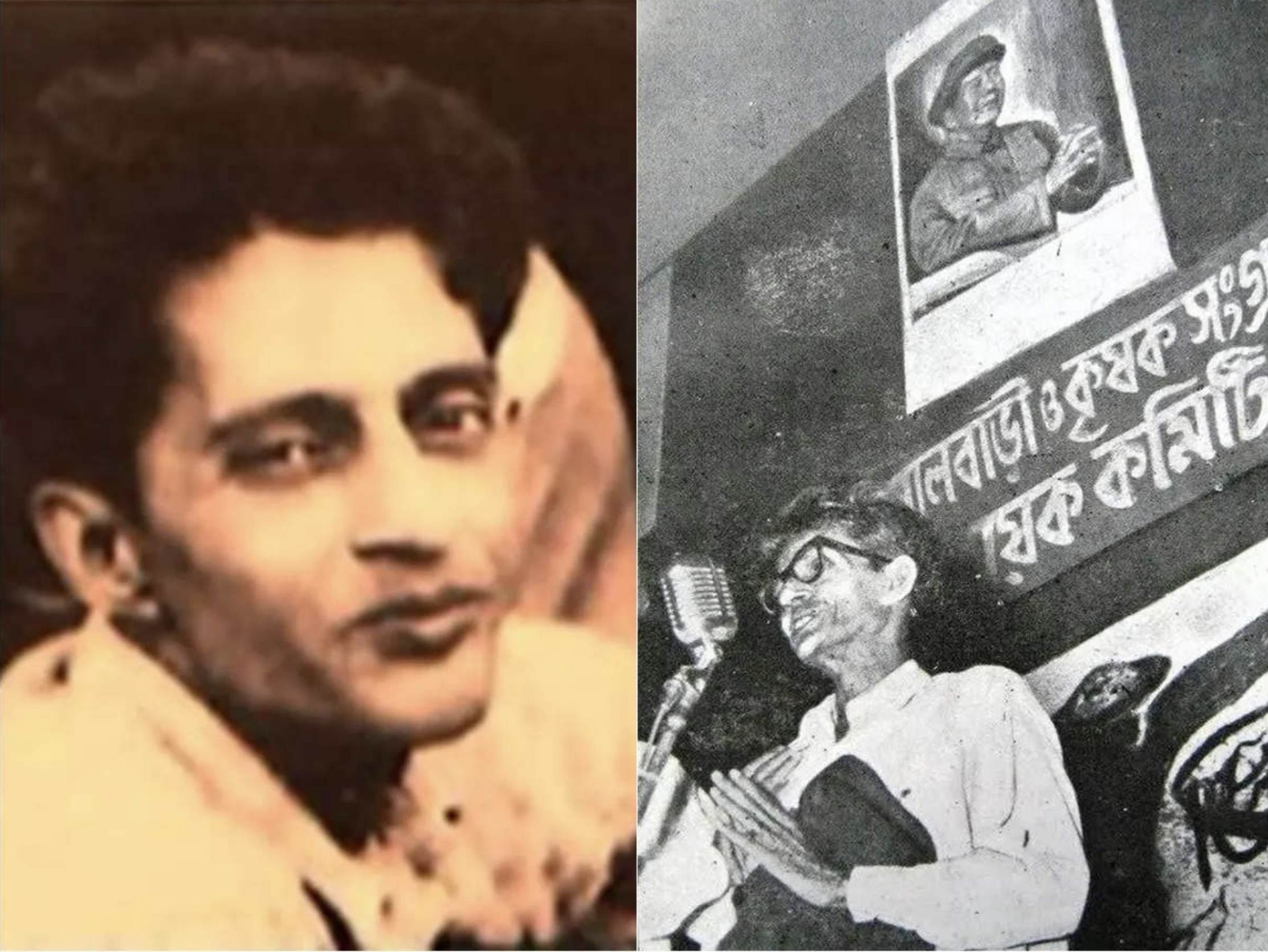
Charu Majumdar. Photo: from open sources
This incident in the village of Naxalbari in West Bengal was the tiny spark that ignited a countrywide revolutionary movement of poor peasants. At that time CPIM was sharing governmental power in West Bengal with the INC breakaway party. They were faced with a choice: either they stand up for the peasants there and say that the police violence was wrong and that the central government should not oppress the peasants, or they could cooperate with the central government. They colluded in sending armed forces into the village and killed seven women and a child from an indigenous Adivasi community. And that meant that the spark didn't remain confined there, it just spread all over Bengal and beyond.
One of the things that made this movement famous was the boycott of elections. The reason why the elections were being boycotted was more because at that time the dominating party was the Congress. There wasn't any other national party. The idea was that you can have a revolutionary moment: instead of voting for the Congress, people can break off and do something non-electoral. But it was met with very severe repression. A lot of young idealistic people in West Bengal were killed, absolutely slaughtered by the police. And then there were mass arrests, and the fledgling CPIML party was almost destroyed. But it managed to slowly revive over time.
In the North Indian state of Bihar, some people were inspired by what was happening in Bengal. There were young activists from the Dalit community – the most oppressed group in Indian society; previously they were also called "untouchables" – and the so-called Backward Classes (Backward Classes are also subordinated castes) These young activists wanted to participate in the elections but faced a lot of violence. At that time, these people were part of the CPIM. They were also experimenting with other things, for example, they called for a separate state/country for Dalits and for oppressed castes. They had also heard about the CPIML, so they tried to go looking for a leader of the party, but the party was underground and initially they did not find or meet anyone. In the end, they actually set up the CPIML themselves in central Bihar. And only later they were able to unite, and Bihar became one of the centers of resistance for this party.

Kavita Krishnan addresses striking workers at Wazirpur Industrial Area, February 2012. Photo by Kavita Krishnan
Amazing work was done there, because the CPIML played a role in democratizing an extremely feudal society. That's why I say that for young people like me in the 1990s, it wasn't so much the theory that was important: not what Marx, Lenin, Stalin said. Instead, we were very inspired by the fact that in the 1980s this movement could ensure that an agricultural worker and a landlord from the dominant caste were on the same level and could argue about wages.
Caste violence against landless poor and women from the oppressed castes still happens all over India. The thing which was very important about the CPIML was that the landscape of rural Bihar was hugely changed thanks to the CPIML's presence there. They had to fight for the oppressed castes to avail of their right to vote.
India had universal adult suffrage right from the beginning. But for Dalits and other oppressed communities, the situation was very similar to that of African Americans in the USA: formally they had the right to vote since the late 19th century; but up until the 1960s, they risked being killed for casting their vote. It took a mass movement, with protestors being arrested and even killed, for African Americans to get voting equality in the USA. Likewise in Bihar, till the 1980s, oppressed castes had the formal right to vote; but in reality, their votes would be “cast” for them by upper caste landlords. If someone from the oppressed castes dared to go cast a vote in person, they were killed. The CPIML played a very big part in actually breaking that form of oppression — the party led a successful struggle to assert the democratic right to vote.
And eventually the CPIML also then was voted for. The CPIML candidates were from those oppressed classes of people, and they won elections in the face of all odds. This election success was met with a very violent upper caste landlords’ reaction. The landlords organized these private militias. The nineties, when I was a student and was drawn to this party, was a time when there were terrible, huge massacres of Dalit villages, where mostly sleeping women and children were killed wholesale by their private militia. They killed these women and kids simply because they were supporters of CPIML as a deterrent. All this was openly boasted of by the leaders of these organizations who would say that they were killing women because they “breed the Naxalites (colloquial for the CPIML, a reference to the Naxalbari village and movement).
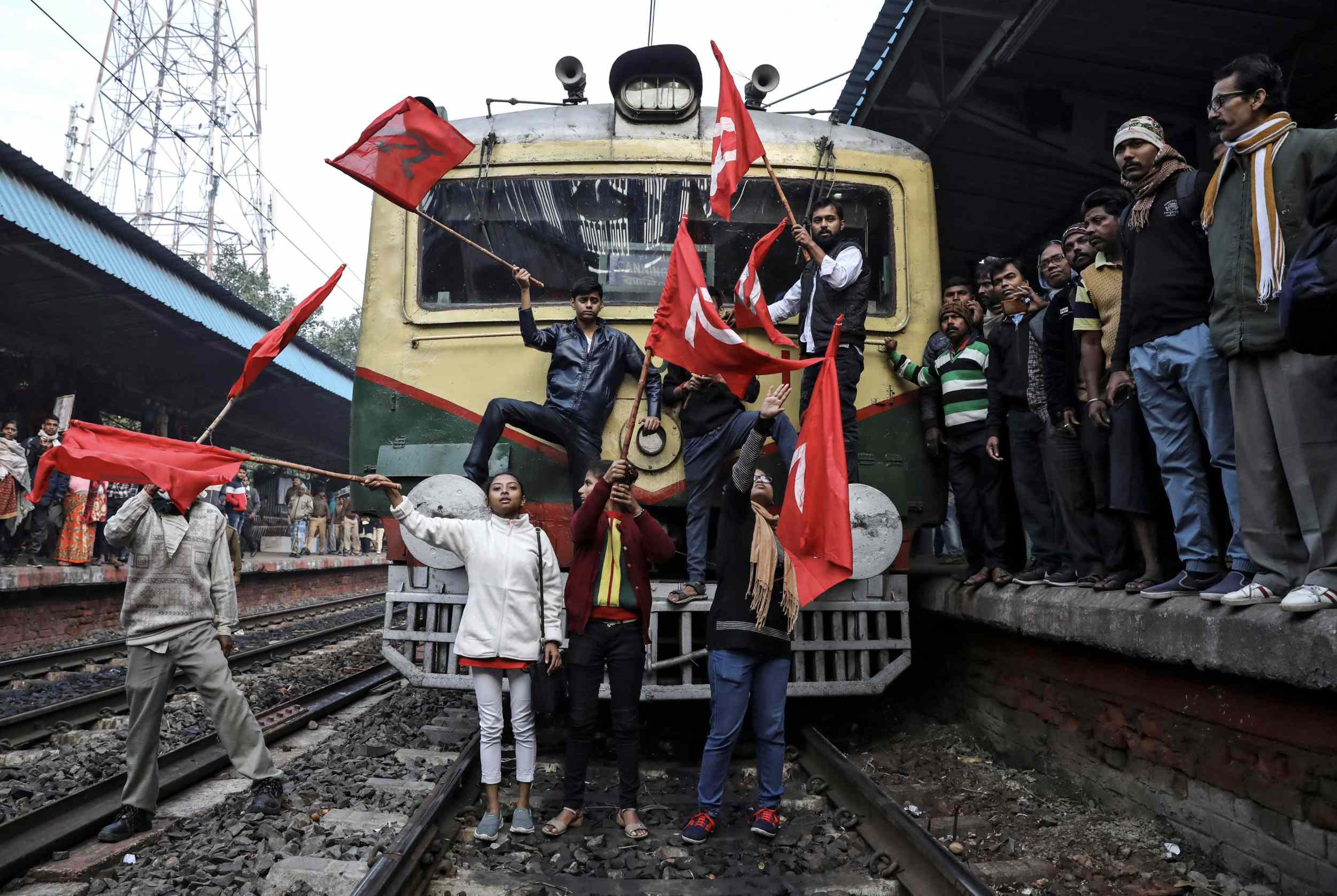
Communist Party of India (CPI) supporters block a passenger train during an anti-government rally organized as part of a nationwide strike by various trade unions in Kolkata, India, January 8, 2020. Photo: Reuters/Rupak De Chowdhuri
I defended the CPIML very passionately then because the other left groups in JNU, media and others in general would say the CPIML is a violent group and that this is a caste clash between the armed militants of the CPIML and the armed militants of that private militia. This was false. CPIML was not an armed militia, it was a party that organized rural landless workers and those who were killed, were not armed militants. They were killed for the crime of voting for the CPIML or being part of CPIML organizations.
There are constitutional quotas for the election of representatives of the most oppressed castes and groups in India — reservations for Scheduled Castes and Scheduled Tribes. Are they effective?
They have played an enormous role. I wish that system had been more robust. In terms of political leadership, there is no doubt at all it has been a huge success. Recently, a friend of mine wrote a big volume about the history of caste called “Caste Pride” [Caste Pride: Battles for Equality in Hindu India by Manoj Mitta — Ed.]. Among the things he has talked about is an instance of caste massacre in the 1970s: Dalits were burnt alive in a village in Bihar. The government at the time said that it was not a caste clash, but some kind of rivalry between gangs, and that it had nothing to do with the left movement. But then a remarkable thing happened. Dalit and Scheduled caste and Scheduled tribes MPs across party lines united in the parliament upper and lower house to hold the government to account. They refused to accept governmental explanations. The Dalit MPs made it into a political issue.
At the same time, if you look at reservations in education, and subsequently the Scheduled castes and Scheduled tribes reservations in education – they have been enormously important, because without that prejudice would keep students out the door. And it is still met with a lot of hostility. In classrooms, when I go and I say that caste hierarchy is a bad thing, students agree. Then when I ask to give an instance of what they think is terrible about caste, pat comes the unanimous reply: reservations. The corrective measure is seen as the problem. The government-run educational institutions and employers try to undermine reservations, slash the numbers of reserved seats, and avoid filling those seats. They just leave the reserved seats empty, saying no one qualified enough. In the last ten years the government of Narendra Modi and its parent organization, a sort of fascist paramilitary group called the RSS, have a very committed view against reservations. They can't say it openly now, but they keep testing the waters once in a while to try and say that there should be a deadline for reservations, that they shouldn't continue indefinitely.
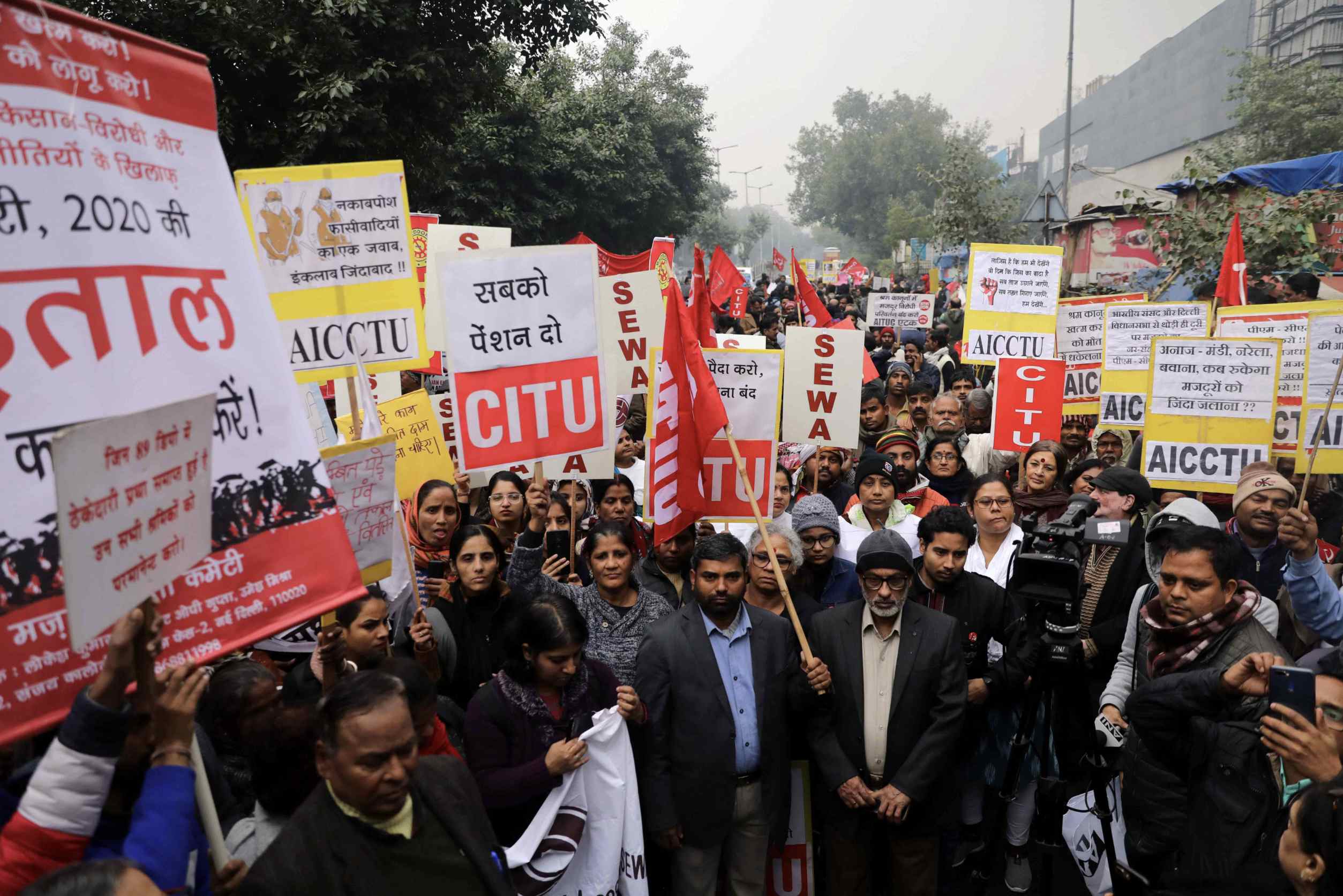
Workers hold placards during a nationwide strike by various trade unions in New Delhi, India, on January 8, 2020. Photo: Reuters/Anushree Fadnavis
You're the head of the All India Progress women movement. Could you tell me more about the women movement in India? Are there only leftist women organizations? Or are there also organizations from the other side of the ideological spectrum?
The women's organization to which I belonged was also associated with the ML, so I'm no longer a part of that. But yes, some of the biggest women's movement organizations in India are on the left, because these are really mass organizations. But that said, there has historically been a tension between these organizations which would call themselves women's organizations, but not feminist organizations, and which define themselves as non-feminist – the left women's organizations.
India has had a very powerful feminist movement since the 1970-80s. There's been a wide variety of women's groups, women's movements, and many feminist organizations which have survived till now. But where feminist groups are concerned, there has also been some NGO-isation. And the left groups defined themselves as being “not feminist”.

Kavita Krishnan. Photo: PTI
When I joined the movement in the party in the 1990s, I initially felt very uneasy about the women's organization position, because the leadership (most of which was from the middle class) would take positions even more conservative than the mainstream party position on various social questions. There were exceptions of course, and there were women who were very progressive in some respects while very conservative in others, and they had all been very courageous and inspiring in their personal lives and their political work. But it is true that “non-feminist” communism slid very quickly into anti-feminism. For example: a very moralistic approach towards sexuality and women's sexual behavior resulting even in slut-shaming some rape survivors; ‘western’ and ‘capitalist’ being used interchangeaby, with the result that sex-positive feminism or LGBTQ+ rights were called a product of western, capitalistic influence. A lot of work was required to push that back. Some leaders in the women’s organisation would say: “She's feminist, she's not Marxist, she is not a communist”. That uneasiness probably continued right till the end, in some leaders.But I must also say that I received and continue to receive a great deal of respect and love from most party members and supporters, across genders. Many women of a feminist sensibility, as well as gender non-conforming and LGBTQ+ comrades, especially those who live in rural India or in small towns and small cities, still call to tell me how good it felt to be “seen” by me as a party leader.
When I took a position against the death penalty, my own women's organization was very upset, because its official position ever since its inception had been to demand the death penalty for rape. And in India there was this big struggle in Delhi in 2012 against a gang rape of a young woman who was killed later. In that movement, I was speaking publicly against the death penalty. Initially they were very upset saying that I am not representing the organization's position on this, and that I will alienate them from people. But the opposite happened, because with such a stand we were able to distinguish a democratic position from just a general public lynch mob kind of position. Instead of asking the state to execute someone, we asked the state to support women's autonomy and women's mobility in the city, making it easier for women to occupy the city. We were also able to bring the violence against women’s autonomy in households as well as in colleges and factories, a violence that could hide in plain sight disguised as “safety”. This position resonated with young women who had to negotiate daily with parents, hostel wardens and employers alike, to avoid restrictions and surveillance in the name of “keeping them safe”. In the end, the position I advocated benefited us and was embraced by a lot. Then there was a respect and greater acceptance for me in the women's organization. But I know that even after I left, there have been comments by a couple of people saying that I was always an alien element, always suspicious, never fully communist, more of a feminist and they shouldn't have given me so much space.
